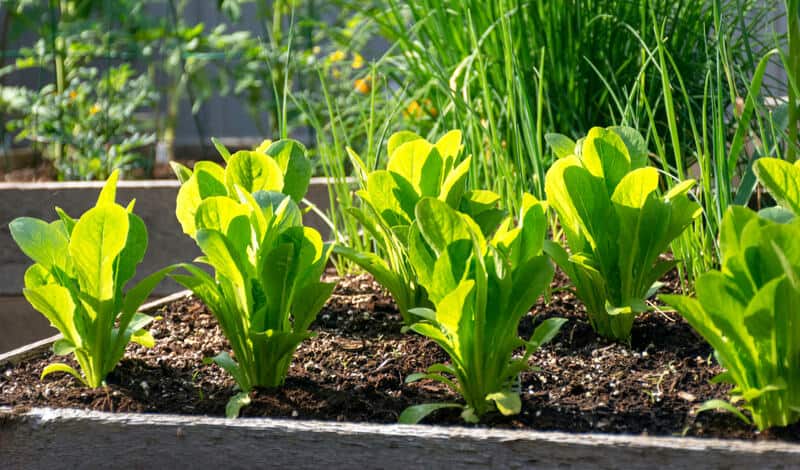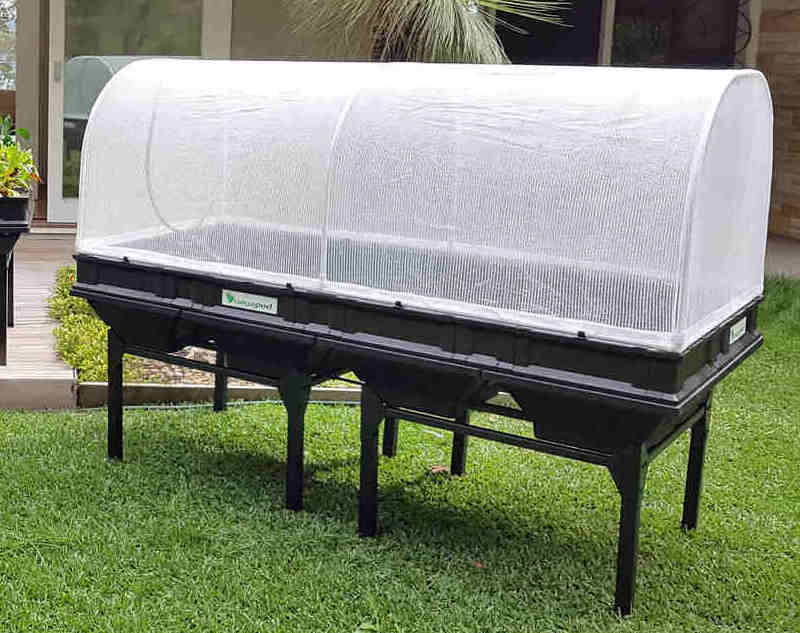A well-manicured lawn adds a touch of class to any home. It’s there for you to show off, and for passers-by to admire.
A manicured lawn is tricky to maintain, but well worth the effort. The only issue is that you can’t have more than ornamental plants on your lawn — right?
Nope! It’s actually possible to maintain a neat lawn while also keeping an edible garden, and that’s by using a raised garden bed.
This way, you can have all the herbs and veggies you can plant, but still get that neatly-trimmed look that’ll make your neighbours envious.
As for how to maintain a manicured lawn with raised garden beds, read on!
How To Use A Raised Garden Bed
If you’ve never used a raised garden bed before, then Vegepods are an excellent place to start. Their award-winning kits are beginner-friendly and accessible to everyone.
With the mission of “easy and effective garden growing”, the Vegepod provides you all the benefits of both a raised garden bed and a container garden.
They keep your plants safe, have self-watering systems, and even accelerate plant growth under the protective cover!
Using a raised garden bed is simple. First of all, select the appropriate size for your lawn — this will depend on your purpose.
If you’re going to use it for plant propagation (see below!), the smallest size would be best. But if you plan to use it for edible plant growing, a medium or large size allows you to grow more.
After that, consider the following factors: drainage, sunlight, and location. Your raised garden bed should drain well, otherwise your plants might drown (luckily, Vegepods have built-in drainage systems!).
Next, the bed should be somewhere sunny, even if they’re tucked away in a corner of your garden.
And finally, location is paramount — after all, you’re using your Vegepod to help organise your lawn.
You can place your Vegepod or other raised garden beds in places like:
- Under your kitchen window for easy access
- In a sunny corner of the lawn
- On a paved section in the middle of a lawn
- Or indoors — check below!
Be sure to check with your local council for any placement restrictions beforehand. Otherwise, it’s on to planting!
You can use your garden bed for ‘square foot gardening’, in which you divide the bed or container into square sections.
After that, it’s simply a matter of smart and efficient planting to make the most out of your mini-garden.
You can also simply plant one to three varieties that grow well together, and maximise the space available to you.
Then simply set up your Vegepod as per manufacturer instructions, and — pun intended — it’s all systems go.
Planning Your Lawn Around A Raised Garden Bed
One way of maintaining your lawn’s aesthetic while using a raised garden bed is to build the Vegepod (or other garden bed structure) into your lawn design.
Vegepods and other raised beds on stands need sleepers or pavers underneath so they don’t sink into the ground.
Given that, you can designate a section and create a foundation (wood, pavers, concrete — anything goes!) and use that to stand your Vegepod on.
You can then opt to surround the raised garden bed with ornamental plants so it blends in and creates a central feature.
Then your Vegepod will be functional and aesthetic — which is a win all around. Just make sure to maintain those plants alongside your lawn!
Keeping It Indoors
If you’d rather not place the Vegepod (or other raised garden bed) on your lawn, but still want to grow edibles or propagate ornamentals, consider keeping your container garden indoors where there is plenty of sunlight!
Get a small size to keep in the kitchen, a medium one for your balcony, or even a large one for the roof.
This way, you can keep your lawn neat and tidy, while also getting all the benefits of cultivating plants in your home.
Maintaining Your Lawn With A Raised Garden Bed
Grass care
If you’re placing your raised garden container directly on the ground, you don’t need to maintain the grass underneath the container.
You can also opt to add aesthetic and support by shoring it up with rocks, and by growing shade plants underneath (ajuga, lilyturf, and mondo grass are good options).
But if you use the stand and keep it raised, then you’ll need to maintain the grass underneath — the mark of a manicured lawn!
Since Vegepods and other raised container gardens often come with metal stands, it’s not recommended to use whipper snippers and similar tools.
You can either trim the grass by hand using shears, or simply sit back and let a professional lawn mowing service take care of it for you.
Water recycling
The Vegepod is Smart Water Mark Approved – it has a built-in self-watering system, with its own sprayers and a wicking reservoir underneath.
But if you accidentally leave the hose on, or if it rains heavily, or if you’re using a different raised garden bed – you’ll end up with an overflow of nutrient-rich water.
You can collect this water in a bucket or other collection system, then recycle it to use for taking care of your lawn and ornamental plants.
Pro-pod-gation
There are uses for Vegepods beyond edible gardens! You can opt to get a small container to help propagate or germinate your plants.
The Vegepod is an ideal space to grow flowering plants or ornamental shrubs from seed, with its controlled environment that helps accelerate plant growth.
Use your Vegepod as a seed bed, or as a mini-nursery for any cuttings and seedlings you’d like to grow.
Then transplant them onto your lawn and presto! Homegrown ornamental plants.



